 |
| |
MI6 looks back at Lee Goldberg's "Making
the James Bond Films" written during the 25th
anniversary year of James Bond's cinematic adventures...
|
|
Making The James Bond Films (Part 2) - By Lee
Goldberg
22nd June 2005
Lee Goldberg interviewed those involved with bringing Bond to
the big-screen back in 1987, when the cinematic 007 series was
celebrating it's 25th anniversary and the introduction of the
fourth James Bond actor... Click
here to read Part 1.
| "Live
and Let Die," besides being Moore's
premiere outing, was also the first 007 film noticeably
influenced by the competition. It was written when "blacksploitation"
movies were the rage, thanks to the success of "Shaft"
and "Superfly." So this time, the villains were
black, the caper involved drugs, and ex-Beatle Paul
McCartney was hired to give 007 a hot title tune.
The ploy back-fired. By the time "Live
and Let Die" came out in 1973, the blacksploitation
craze was dead and the film, by trying so desperately to
be trendy, came off looking tired and out-of-step. Only
the song was a hit.
"The Man With The
Golden Gun" came next, and was generally considered
to be small-scale and unimaginative in comparison with early
007 films. It performed badly by Bond standards at the boxoffice
and took a critical drubbing. Variety, the bible of the
entertainment industry, said the film was placid and Bond
himself had become stale. "At this rate, the (next)
film might be phoned in."
|
|
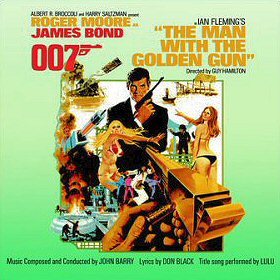
 MI6
Price $10.99
MI6
Price $10.99
 MI6
Price £7.99
MI6
Price £7.99
|
The James Bond phenomenon, it seemed, might finally be ebbing.
Clearly, something had to be done. Producer Albert
R. Broccoli bought out partner Harry Saltzman and took on
the naysayers with a vengeance. "The
Man With The Golden Gun" cost $7 million; for "The
Spy Who Loved Me," Broccoli doubled the budget. If "The
Man With The Golden Gun" was small in scope than "The
Spy Who Loved Me" would be gigantic.
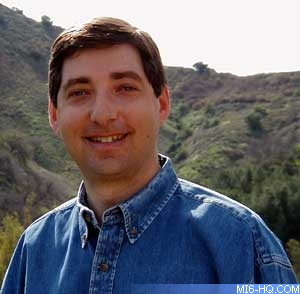
Above: Lee Goldberg |
|
Broccoli turned to the most extravagant
Bond film, "You Only Live Twice," virtually lifted
the entire plot, and embellished the whole thing with elaborate
special effects and gadgetry. The future of 007 was riding
on a steel-toothed villain named Jaws, a sports car-turned-submarine,
and Roger Moore, who was heartily encouraged to run wild."
It worked. "The Spy
Who Loved Me" made $78 million, twice as much as
"The Man With The Golden
Gun." and the critics loved it. "I think after
Man With the Golden Gun we started letting a little more
of my humour creep in," says Moore. "The first
two Bonds I did were a little experimental, but with 'The
Spy Who Loved Me,' I think we found the right ingredients,
the right level of humour, the right approach."
|
By now George Lucas and Steven Speilberg were setting box-office
records with "Star Wars" and "Close Encounters
of the Third Kind." Broccoli apparently felt threatened by
the young upstarts, and the special-effects savvy audience they
were creating. With "Moonraker,"
it was as if he was trying to prove he could do it bigger and
better than they could.
"Moonraker" was a special
effects spectacular involving stolen space shuttles (which were
still a few years away from being a reality) and climaxing with
a laser battle at the villain's orbiting space colony. It cost
$30 million, twice as much as "The
Spy Who Loved Me." And while it did out-of- this-world
business, $87 million worth, it didn't wow the fans.
| "I can understand a Bond purist saying
'God they ruined him,' but I think the Bond films have changed
properly with the times," says Tom Mankiewicz, writer
of "Live and Let Die,"
and co-writer of "Diamonds
Are Forever," and "The Man With the Golden
Gun."
"The moment that gadgetry appeared in 'Goldfinger,'
the audience went bananas," says Mankiewicz. "It
was as if the producers were then under an obligation to
make each picture bigger, a little more filled with gadgetry,
until the audience came to expect that from Bond."
Despite "Moonraker"'s financial success, producers
Broccoli and Michael G. Wilson, his stepson, realized it
was time to bring 007 back to earth. "You try different
ways to go and I think with 'Moonraker' we went that direction
about as far as we could," says Wilson.
|
|
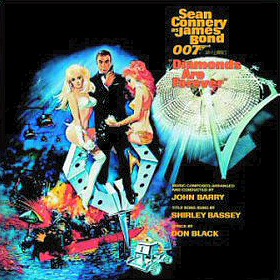
 MI6
Price $10.99
MI6
Price $10.99
 MI6
Price £7.99
MI6
Price £7.99
|
They tried to reverse the trend by toughening Bond up in "For
Your Eyes Only" and concentrating on the espionage rather
than the special effects. But it didn't work artisitcally. "We
tried to go back to the earlier films with 'For Your Eyes Only,'
but we didn't have Sean Connery to make it real." says Maibaum,
who co-wrote the script with Wilson. "Roger does what I consider
unforgivable: he spoofs himself and he spoofs the part,"
says Maibaum. "When you start doing that, the audience stops
laughing. The most important thing in the Bond pictures is a pretense
of seriousness."
The next adventure was "Octopussy,"
the Bond film Moore feels best exemplifies his approach to 007.
"I think we reached a peak with Octopussy, which was very
outrageous," Moore says. "What we were saying to the
audience was 'Look, you've been seeing these things for 22 years
and they are intended to be fun and we want you to laugh with
us, not at us."
"The Bond situations to me are so ridiculous, so outrageous.
I mean, this man is supposed to be a spy and yet everybody knows
he's a spy," Moore adds. "Every bartender in the world
offers him martinis that are shaken and not stirred. What kind
serious spy is recognized everywhere he goes? It's outrageous.
So, I think you have to treat the humour outrageously as well."
|
Because "Octopussy" was so much a reflection
of Roger Moore, it served as a strong counter point to Sean
Connery's rival Bond film, "Never Say Never Again."
Connery's film was a remake of "Thunderball,"
the exclusive rights to which Broccoli lost in a lengthy
and complicated court battle.
"Never Say Never Again" portrayed Bond as an
elder agent, put out to pasture by a new regime running
the secret service, but he was still as hard-edged as ever.
The actual competition between Connery and Moore, now no
longer a philosophical issue but a real box-office battle,
seemed to put the hotly debated question "who is the
real Bond?" to rest. Audiences flocked to see both.
And although "Octopussy" beat "Never Say
Never Again" at the boxoffice, they were both extremely
successful.
|
|
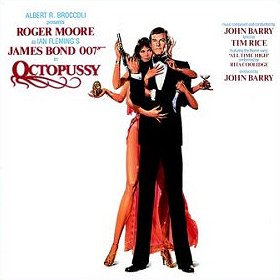  MI6
Price $10.99
MI6
Price $10.99 |
Moore returned for one more, "A
View to a Kill," and then said he was finished. "Roger
realized it was time for a change," says Wilson, "time
to get off the treadmill." The producers didn't argue with
him. Suspending disbelief is one thing, but it was getting pretty
hard for audiences to swallow a 57-year-old 007. Besides, Moore's
pricetag was getting pretty steep -- reportedly over $3 million
a picture.
At first, the producers toyed with a radical reaction against
the aged, tongue-in-cheek 007 Moore has come to represent. Wilson
and Maibaum crafted a story that would take Bond back to his origins,
to his very first adventure as a spy.
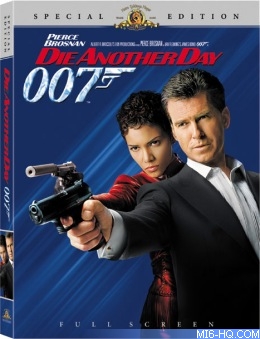
Above: The 20th James Bond film Die Another Day
 MI6
Price $13.49
MI6
Price $13.49 |
|
"We thought as long as we were changing
Bond, why not go for a younger man?" Wilson says. Some
younger actors were auditioned, though he won't say who
they were, and he co- wrote a detailed story outline with
Maibaum.
"We had some very good things in it," Maibaum
says. "But (Broccoli) felt the audience doesn't pay
to see James Bond as an amateur. Naturally, if you tell
that story, you have to show him making mistakes and how
he learned his trade. It cuts out to many of the things
the audience enjoys watching Bond do."
So the writers scrapped that treatment and began a new
one which eventually evolved into "The
Living Daylights." They didn't know who would be
Bond, but knowing it wasn't Roger Moore gave them some freedom.
"I think with Roger, the films were more of a romp,
it was fun action/adventure," says Wilson. Moore admittedly
couldn't be ruthless convincingly, so the writers had to
take that into account. Now they didn't. Now they could
get tough. "Roger brought a certain style to the films,
his style, and we had to write scenes a certain way to fit
that style."
|
Timothy Dalton was the first
choice for the role, but he was tied up indefinitely with "The
Taming of the Shrew" on the London Stage. The producers signed
Pierce Brosnan instead, but
when NBC renewed his TV series "Remington Steele," he
was forced to give up the part. Luckily, Dalton was now available
and was quickly hired.
Dalton wants his characterization to come closer to Ian Fleming's
literary Bond and be less of a superman and more of a human being.
That's fine with the writers. "I happen to think that Timothy
Dalton gives us a new lease on life," says Maibaum. "We
can go back to the more realistic espionage stories rather than
the far out fantasy stories."
But still, it's a James Bond movie, and much of what audiences
love about them is the formula they all know so well. How much
longer can the formula last before audiences get bored of it?
"We are in the same position as the members of the U.S House
of Representatives. Every two years they come up for re-election,"
Wilson says. "Every two years we come out with a new Bond
film. People go to the box-office and vote. We are either voted
back in or we aren't."
"There's no reason the Bonds can't go on forever."
says Maibaum, "Some characters are immortal -- Robin Hood,
The Three Musketeers, Sherlock Holmes ... and now, James Bond."
Related Articles
 Writing
`A View To A Kill` - By Lee Goldberg
Writing
`A View To A Kill` - By Lee Goldberg
 Lee
Goldberg's Interview With Roger Moore
Lee
Goldberg's Interview With Roger Moore
 Making
The James Bond Films (Part 1) - By Lee Goldberg
Making
The James Bond Films (Part 1) - By Lee Goldberg
Republished courtesy of Lee Goldberg, images
courtesy of Amazon associates.